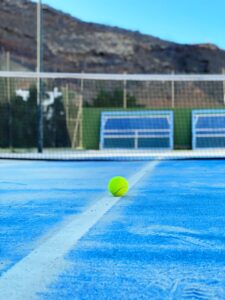From Defense to Attack: The Art of Transitioning in Padel
3 min read
From Defense to Attack: The Art of Transitioning in Padel
Padel is a fascinating sport that combines elements of tennis and squash. Played in doubles on a smaller court, it requires a great deal of strategy and communication between partners. One crucial aspect of the game is transitioning from defense to attack, which can make all the difference in winning a point. In this article, we will dive into the art of transitioning in padel and share some valuable tips on how to communicate effectively in padel doubles.
Understanding the Importance of Transitioning
Transitioning is the key to gaining control of the point and catching your opponents off guard. It involves moving from a defensive position to an offensive one, putting pressure on your opponents and giving yourself the upper hand. To make this transition successfully, coordination and communication with your partner are essential.
1. Anticipation and Positioning
A successful transition starts with anticipation and positioning. As soon as you notice your opponents are on the defensive, it’s time to move forward and take control. Position yourself closer to the net, ready to pounce on any opportunity that comes your way. Communicate with your partner, letting them know you are ready to attack.
Effective communication tip: Use clear, concise signals or verbal cues to let your partner know when to move forward. For example, a simple hand signal indicating readiness to attack can work wonders.
2. Quick Footwork and Timing
In padel, quick footwork is crucial for a successful transition. You need to move swiftly and explosively to seize the moment. As your partner makes a shot that puts your opponents on the back foot, be ready to move forward with urgency.
Effective communication tip: Verbally communicate your intention to attack to your partner as you make your move. A short, clear phrase like “I’m moving up” can help your partner anticipate your actions and adjust accordingly.
3. The Art of the Fake Shot
The fake shot is a strategic move that can help you gain an advantage during a transition. By pretending to hit a specific shot, you can deceive your opponents and create confusion. This buys you precious time to move forward and take control of the point.
Effective communication tip: Discuss with your partner when and how you plan to use fake shots. Coordinate your actions to maximize the effectiveness of this tactic.
4. Communication During the Transition
Communication is crucial throughout the transition process. As you move forward and take control, constantly update your partner on your position and where you plan to hit the ball. This information allows your partner to adjust their position and be ready for any shots that may come their way.
Effective communication tip: Use simple, clear phrases to communicate your intentions. For example, saying “I’m going cross-court” or “I’ll be at the net” can help your partner prepare for the next shot.
5. Practice, Practice, Practice
Transitioning in padel takes practice. The more you play and communicate with your partner, the better you’ll become at reading each other’s movements and knowing when to transition. Find opportunities to practice specifically on transitioning drills and focus on improving your communication skills.
Effective communication tip: Always debrief after each practice session or match. Discuss what worked well in terms of communication and what you can improve upon.
Conclusion
Transitioning from defense to attack is a vital skill in padel doubles. It requires anticipation, quick footwork, effective communication, and practice. By mastering the art of transitioning, you and your partner will be able to take control of the point and increase your chances of winning. So get out on the padel court, communicate effectively, and enjoy the thrill of transitioning to victory!







